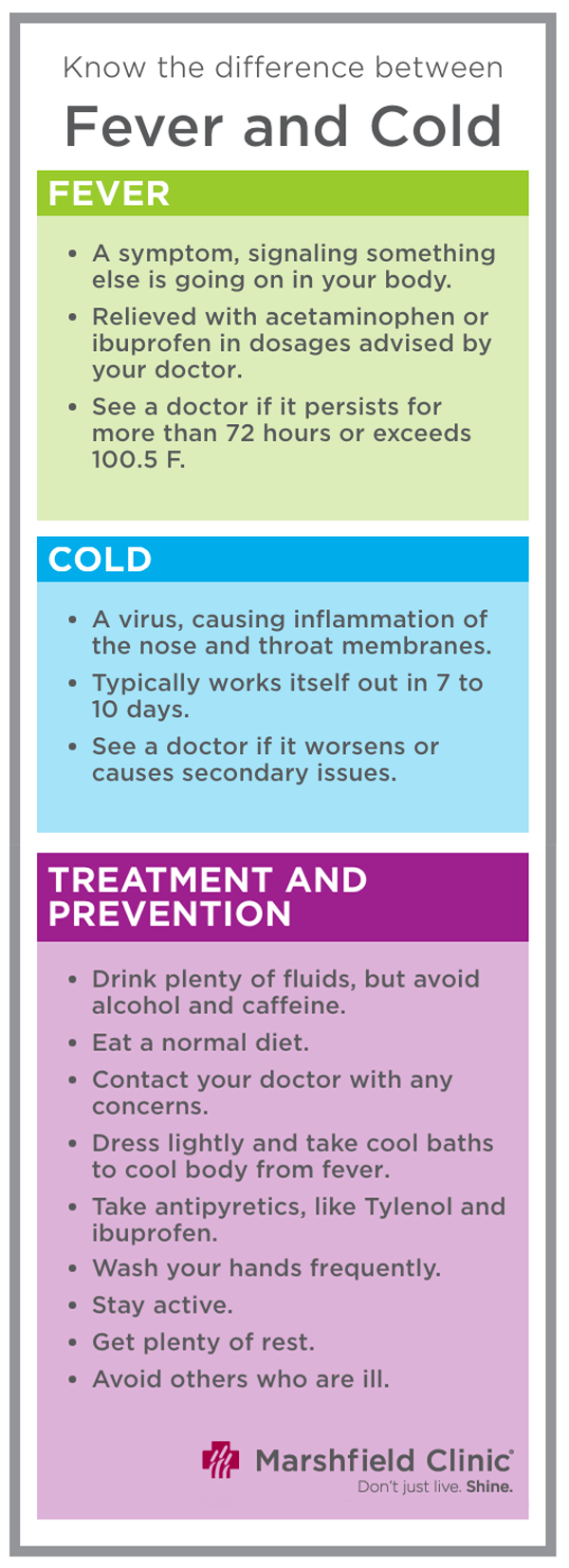
Don’t starve that cold. Instead, stick to a balanced diet – your body is in need of those nutrients and lots of fluids.
Relying on old adages can be comforting. And sometimes, these sayings do have truth to them when it comes to your health.
But what about the classic proverb, “Starve a cold, feed a fever?” Is this advice helpful?
No. In fact, starving any sort of virus is the last thing you should do, said Cindy Sorenson, a Marshfield Clinic family medicine nurse practitioner.
“There is no scientific evidence to support this proverb,” Sorenson said. “In reality, your body needs nutrients from your regular diet to help you fight the illness.”
Treating a cold vs. a fever
The above-mentioned phrase suggests a common cold and fever are best treated differently. Sorenson, however, recommends treating them much the same: Eat as you normally would, push fluids and get a lot of rest.
Hydration is key for colds and fevers.
“The old adage about chicken noodle soup being good for you is actually true,” Sorenson said. “Not only is it warm and soothing, but it also provides the nutrition and hydration your immune system needs.”
A virus and a symptom
Colds and fevers are different in that one is a virus and one is a symptom.
The uncomfortable nose and throat issues people often use to describe a cold occur because a virus has entered the body.
Common colds can last 7 to 10 days – another good reason not to “starve a cold,” said Sorenson. That’s too long to simply not eat.
A fever, though, is a response to a virus or bacteria. In other words, it’s a symptom, and often occurs at the onset of a cold. Fevers associated with colds are typically low-grade, whereas fevers are higher with the flu.
 What if my cold or fever persists?
What if my cold or fever persists?
A common cold typically doesn’t require a visit to the doctor. But, if your cold leads to a secondary issue, such as persistent fever, ear pain or any other prolonged symptom, contact your provider.
Monitor fevers closely. If your fever is greater than 100.5 and lasts more than 72 hours, call your doctor to make an appointment.
“A fever extending beyond two or three days might indicate something more serious,” Sorenson said. “This is a good time to get in touch with your provider.”
Keep this chart on-hand for a quick list of differences, treatment and prevention.
Fever and Cold
- A symptom, signaling something else is going on in your body.
- Relieved with acetaminophen or ibuprofen in dosages advised by your doctor.
- See a doctor if it persists for more than 72 hours or exceeds 100.5 F.
- A virus, causing inflammation of the nose and throat membranes.
- Typically works itself out in 7 to 10 days.
- See a doctor if it worsens or causes secondary issues.
- Drink plenty of fluids, but avoid alcohol and caffeine.
- Eat a normal diet.
- Contact your doctor with any concerns.
- Dress lightly and take cool baths to cool body from fever.
- Take antipyretics, like Tylenol and ibuprofen.



The way I always heard the old adage was "starve a fever, feed a cold". Doesen't your Nurse Practitioner have it backwards?
Thanks for reading, Ron. We’ve actually heard it both ways, too. Regardless, as Cindy says in the story, she recommends never starving any sort of virus. -Kirstie